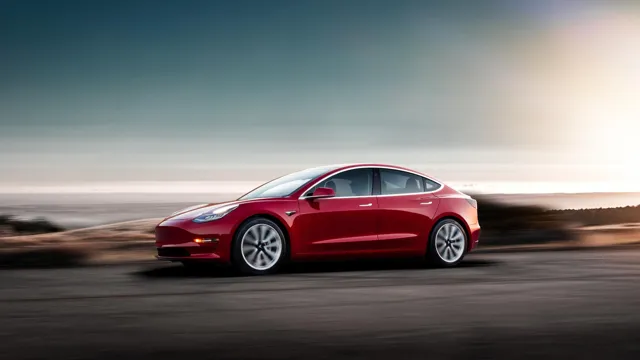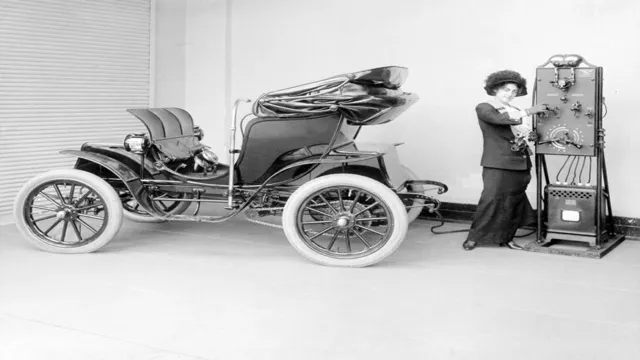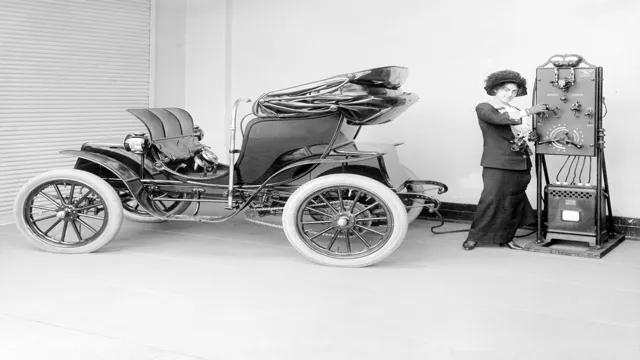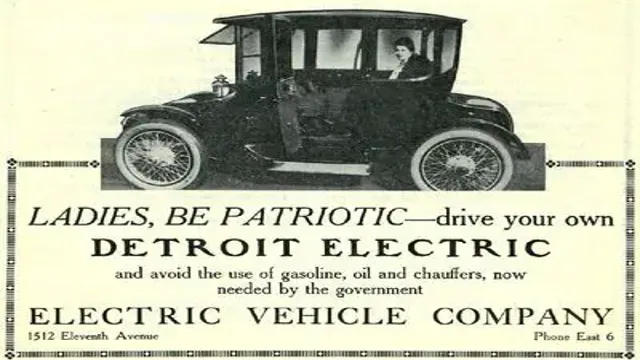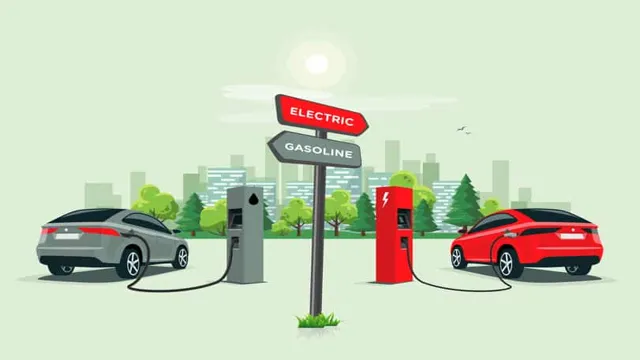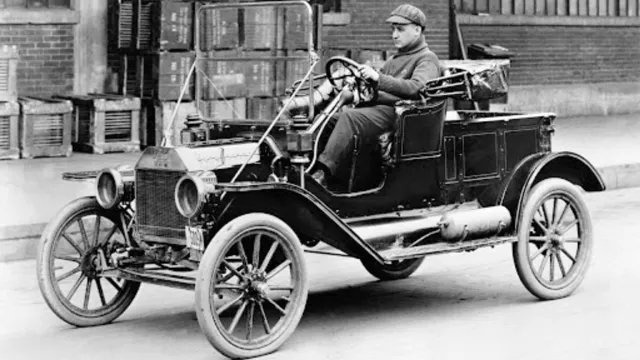The Revolutionary Evolution of Tesla Electric Cars: A Journey Through the History of Innovation
The Tesla Electric Car Evolution has been an exciting journey that has captivated car enthusiasts all over the world. The company’s remarkable progress in the past decade has put it at the forefront of the electric vehicle (EV) market, offering drivers a new range of nimble and efficient cars. Tesla has redefined the automotive industry with its cutting-edge technology, innovative designs, and unwavering commitment to sustainability.
When Tesla started producing its electric vehicles, it was not taken seriously. Many critics believed that the technology behind electric cars was far from ready, and they would never be able to compete with conventional petrol or diesel-powered cars. However, Tesla proved everyone wrong, and their first electric car, the Roadster, gained widespread acclaim.
It showed that an electric car could be just as stylish, fast, and fun as a traditional car, but with one significant difference; it did not emit any harmful pollutants. Since then, Tesla’s electric car evolution has been unstoppable. The company has constantly pushed the boundaries of what is possible with electric cars, introducing several models that come equipped with advanced technology, long-lasting batteries, and impressive performance capabilities.
Their flagship Model S is considered to be the most advanced electric car on the market, with a range of up to 402 miles per charge. The Tesla Electric Car Evolution shows no signs of slowing down, and with new models like the Model X, Model Y, and Cybertruck, it is evident that the company is determined to lead the charge towards sustainable energy in the automotive industry. As more and more people become aware of their carbon footprint and the importance of conserving the environment, Tesla’s vision of making electric cars accessible to all is becoming a reality.
In conclusion, Tesla’s electric car evolution has been a remarkable journey that has changed the face of the automotive industry. The company’s commitment to sustainability, innovation, and cutting-edge technology has made it a household name, and its products are highly sought after by car enthusiasts around the world. With the launch of even more advanced models expected in the future, the Tesla Electric Car Evolution is one that we’ll all be watching closely.
Early Beginnings
The history of the Tesla electric car can be traced back to the early beginnings of the company in 200 Elon Musk, alongside a group of engineers, founded Tesla Motors with the goal of creating sustainable energy solutions and disrupting the automobile industry. The first electric vehicle, the Tesla Roadster, was introduced in 2008, and it quickly established itself as a game-changer in the automotive world.
Featuring a sleek design, impressive performance, and zero emissions, the Roadster proved that electric cars could be just as exciting and practical as their gas-guzzling counterparts. From there, Tesla continued to innovate and refine its designs, producing more affordable and practical models like the Model S, Model X, and Model Today, Tesla is a household name, and its electric cars have become a symbol of technological advancement and environmental stewardship.
Nikola Tesla’s Ideology & Inspiration
Nikola Tesla’s Ideology & Inspiration started early on in his life, where he showed a remarkable aptitude for electrical and mechanical engineering. Born in Smiljan, Croatia, Tesla was the fourth child of a Serbian Orthodox priest. The young Tesla was fascinated by the workings of machinery and electricity and, at the age of 12, built his first invention, a motor that ran on insect wings.
Tesla continued to nurture his interest in electrical engineering and, in 1884, moved to the United States to work with Thomas Edison. However, Tesla’s ideology and inspiration were different from Edison’s. Whereas Edison focused on direct current (DC) electricity, Tesla believed in the potential of alternating current (AC) electricity.
Tesla’s passion for AC led him to develop the AC motor, which revolutionized the world of electrical engineering and transformed the way we use electricity today.
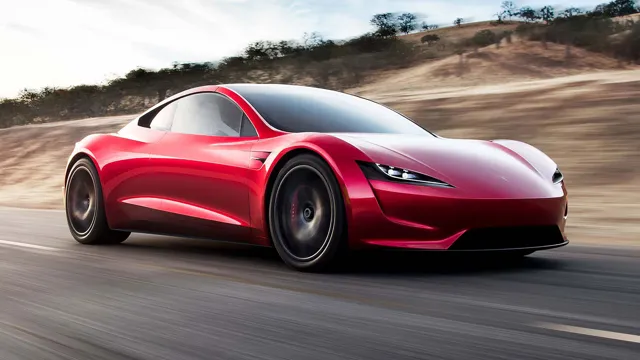
Martin Eberhard & Marc Tarpenning’s Tesla Roadster
At the turn of the 21st century, Martin Eberhard and Marc Tarpenning, two entrepreneurs with a passion for sustainable energy, set out to create an electric sports car that would rival the performance of traditional gasoline-powered cars. They had initially considered converting a gas-guzzling sports car to electric power, but ultimately decided to build a new car from the ground up. The result was the Tesla Roadster, a sleek convertible that could go from 0-60 mph in just
9 seconds. The early road to success was not without its challenges, but Eberhard and Tarpenning were determined to build a car that would change the world. They secured funding from a number of sources, including PayPal co-founder Elon Musk, and in 2008, the Roadster made its debut on the market.
It was the first all-electric vehicle to offer a range of over 200 miles on a single charge, and it quickly became a symbol of luxury and innovation. Today, the Tesla Roadster stands as a testament to Eberhard and Tarpenning’s vision, a car that combines high performance with sustainability in a way that was once thought impossible.
The Model S Era
The Model S Era marked a turning point in the history of the Tesla electric car. This sleek and innovative vehicle was introduced in 2012, and it quickly gained attention for its impressive range of up to 400 miles on a single charge. The Model S was also praised for its performance, with the ability to go from 0 to 60mph in just
4 seconds. However, what really set the Model S apart from other electric cars at the time was its design. It had a modern and minimalistic exterior, with a spacious and luxurious interior.
The Model S Era saw Tesla solidify itself as a leader in the electric car market, with the Model S becoming a symbol of both innovation and style. Even now, almost a decade later, the Model S remains a popular and highly sought-after electric car.
Elon Musk’s Rise as CEO
During Elon Musk’s rise as CEO, one of the most notable eras was the Model S era. Released in 2012, the Model S was Tesla’s first mass-produced car and a game-changer for the electric vehicle industry. With its sleek design, impressive performance, and long-range capabilities, the Model S quickly gained a loyal following.
Elon Musk’s vision for the Model S was to create a car that not only looked great but also performed exceptionally well. The result was a car that could go from 0 to 60 mph in just 2 seconds and had a range of up to 265 miles on a single charge.
The Model S was not only a technological marvel but also a luxury car that could compete with the best. It won numerous awards and accolades, including Motor Trend’s Car of the Year in 201 The Model S era marked a significant milestone not only for Tesla but also for the electric vehicle industry as a whole.
It proved that electric cars could be both practical and desirable, and helped pave the way for the future of electric transportation.
Model S Production & Development
During the Model S era, Tesla’s focus was on developing a luxury all-electric vehicle that would revolutionize the industry. The process required a significant investment in research and development to design a car that would meet the high standards of both performance and design. The Model S production process involved a range of innovative techniques, such as computerized design and advanced manufacturing technologies, which ensured the car was built to perfection.
The result was a sleek, high-performing vehicle that quickly became one of Tesla’s most iconic models. The Model S was not only user-friendly but also environmentally friendly, as it produced zero emissions. Thanks to its popularity, Tesla expanded its production facilities, setting up new factories to meet the increasing demand.
Today, the Model S is still regarded as a milestone in the development of electric cars, with its unique features and high-tech design capturing the hearts of many drivers.
Model S Performance & Awards
The Model S has been a game-changer in the automobile industry, setting new benchmarks for electric cars. The Model S performance has been astounding, with acceleration that can leave sports cars in the dust. It’s no wonder that the Model S has won numerous awards since its launch.
In 2013, the Model S was named Motor Trend Car of the Year, and in 2017 it was named Consumer Reports’ top-rated car. The Model S was also awarded the World Green Car of the Year award in 201 The Model S era has not only been about awards, but it also marked a turning point in the conversation about electric cars.
Before the Model S, many people saw electric cars as slow, boring, and lacking in range. The Model S changed that perception and proved that electric cars could be both luxurious and high-performance. It led the way for other electric cars to follow and spurred competition among automakers to create better electric vehicles.
The Model S has even been compared to the iPhone, with its sleek design, innovative features, and game-changing impact on the industry. Just as the iPhone revolutionized the smartphone industry, the Model S has revolutionized the automobile industry. It’s not just a car; it’s a symbol of progress, innovation, and sustainability.
The Model S era has set the bar high for future electric vehicles, and we can’t wait to see what the future holds.
The Model X & Model 3 Release
The history of the Tesla electric car is fascinating, and the release of the Model X and Model 3 were two significant milestones. The Model X, introduced in 2015, was Tesla’s first SUV with falcon-wing rear doors, advanced autopilot features, and impressive performance and range. The Model X quickly became a sought-after luxury electric vehicle, with its unique design and cutting-edge technologies.
In 2017, Tesla launched the Model 3, its first electric car marketed for the mass market. The Model 3’s price point was lower than its predecessors, making it more accessible to consumers. Since its release, the Model 3 has become the best-selling electric car in the world.
Tesla’s commitment to innovation and sustainability has changed the automotive industry, inspiring other manufacturers to follow suit and develop their electric vehicles. With the recent release of the Cybertruck and Semi, Tesla’s impact on the transportation industry will undoubtedly continue to expand.
Model X Features & Innovation
The Model X and Model 3 are two exceptional electric vehicles released by Tesla that have taken the market by storm. The Model X has many innovative features that make it stand out from other EVs. One of the most unique features is the Falcon Wing doors, which open up and allow easy access to the second and third-row seats.
Additionally, the Model X has a spacious interior and an enormous panoramic windshield that provides an unobstructed view of the scenery. The Model X also has an impressive range of up to 371 miles on a single charge and can reach 0-60 mph in just 5 seconds.
On the other hand, the Model 3 offers compelling features such as Autopilot, which enhances safety and reduces driver fatigue during long drives. The car has a max range of 353 miles and can go from 0-60 mph in just 2 seconds.
Both vehicles offer exceptional performance and showcase the Tesla brand’s commitment to innovation and sustainability. With these models, Tesla provides its customers with a future-forward driving experience that can only be experienced by getting behind the wheel.
Model 3 Affordability & Demand
The release of the Model X and Model 3 by Tesla was a much-awaited event. Both cars were expected to revolutionize the electric car industry, with the Model 3 being the affordable option for the masses. The Model X, on the other hand, was marketed as the “SUV with falcon-wing doors.
” The Model X was launched to mixed reviews, with many questioning the functionality of the falcon-wing doors and the steep price tag. However, the Model 3 exceeded expectations with over 300,000 pre-orders within the first few days of its announcement. The Model 3’s affordability and performance were the driving factors behind its high demand.
The car boasted a range of 215 miles on a single charge and a starting price of $35,000, making electric cars accessible to the masses. It’s no surprise that the Model 3 became the best-selling EV around the world shortly after its launch.
Tesla’s Impact on the Electric Car Industry
The history of the Tesla electric car is one of innovation and disruption in the auto industry. Tesla’s impact on the electric car sector has been profound, as the company has pioneered new technology and pushed the boundaries of what is possible with electric vehicles. Tesla’s Model S was the first truly mainstream electric car, and it quickly became a cult favorite among tech enthusiasts and car lovers alike.
The Model S was so successful that it ushered in a new era of electric cars, with other automakers scrambling to catch up to Tesla’s lead. In fact, it’s difficult to overstate just how much Tesla has changed the electric car industry – today, electric cars are seen as a mainstream alternative to gasoline-powered vehicles, thanks in large part to Tesla’s efforts. With new models like the Model 3 and Model Y hitting the market, it’s clear that Tesla’s impact on the auto industry is only just beginning.
Conclusion
In the history of the Tesla electric car, we see the ultimate fusion of technological innovation and sustainability. From its humble beginnings as a startup in Silicon Valley, Tesla has emerged as a global leader in electric vehicles, with a cult-like following and an enviable brand reputation. But the real genius of Tesla lies in its ability to challenge the status quo and push the boundaries of what is possible.
By investing in renewable energy and creating a new paradigm for modern transportation, Tesla has not only changed the game, but has also reshaped our ideas about the role of technology in a sustainable future. So, the next time you see a sleek and stylish Tesla whizzing by, remember the incredible story behind it and the incredible journey towards a greener planet.”
FAQs
Who invented the Tesla electric car?
The Tesla electric car was invented by Elon Musk and a team of engineers at Tesla Motors.
When was the first Tesla electric car introduced?
The first Tesla electric car, the Tesla Roadster, was introduced in 2008.
What makes the Tesla electric car unique?
The Tesla electric car is unique for its long battery life, quick acceleration, and advanced self-driving technology.
How has the Tesla electric car impacted the automotive industry?
The Tesla electric car has revolutionized the automotive industry by introducing a new standard for electric cars, encouraging competitors to invest in electric technology, and creating a new market for sustainable transportation options.
